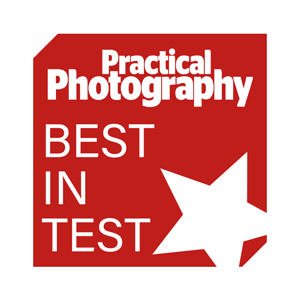Tips for Shooting Boudoir Photography
Are you looking to start shooting boudoir photography? This specialised genre focuses on capturing personal and intimate images that celebrate the beauty of the human body. In this blog post, we will provide you with tips on how to shoot boudoir photography like a pro and ensuring the safety and comfort of your clients during the shoot.
What is Boudoir Photography?
Boudoir photography is a style of photography that captures intimate, often romantic images of individuals, typically in a bedroom or private setting. The goal of boudoir photography is to create tasteful and elegant images that highlight the subject's beauty and confidence. Often aimed towards female clients, this genre focuses primarily on emphasising femininity and the client's body.
Many boudoir shoots will draw on vintage themes and influences from pin-up style shoots from the 40's and 50's. Black and white boudoir images, as a result of this, are common to see, with soft lighting and soft focus.
Vintage Style Photography by Belle Prive Photography. Shot using 2x AD200 Pro flashes and 2x 90cm Octaboxes
Boudoir has gained popularity in recent years as a way for individuals to celebrate their bodies, boost their self-confidence, and create personal gifts for their partners, and the images don't always have to be explicit to evoke the boudoir style.
Keeping your Client in Mind
When shooting boudoir photography, it is essential to prioritise the safety and comfort of your clients. Generally, your client will be stepping out of their comfort zone for the shoot so it's your job to make sure they're feeling confident and at ease,
Create a safe and welcoming environment by establishing clear boundaries, communicating openly with your clients, and respecting their wishes and comfort levels. Meeting with the client to discuss the shoot ahead of time can do a lot to ease your clients mind and make them a lot more relaxed around you - and keeping conversation light-hearted and friendly can help too. This is also helpful to take some notes on outfits to bring, and what hair and makeup the client will want if you'll be working with a HMUA.

Always obtain consent before capturing any intimate images and ensure that your client feels empowered and in control throughout the shoot, allowing them to take the pace they feel is best for them.
Tip: Need some help with client posing? Our blog on non-model posing tips is perfect to remind you of the key posing tips you'll need to keep in mind.
If inviting your client to shoot in your studio space, ensure they have private space to change or get ready, as well as offering a robe to wear between changes (or encourage them to bring one). Keeping the studio temperature comfortable is also important to avoid your client getting too cold if wearing minimal clothing.
Offer the client the opportunity to invite a friend along if that would make them feel more comfortable - this might help them feel more at ease and act more naturally when shooting.
Tips for Lighting Boudoir Images
Lighting plays a crucial role in boudoir photography, as it sets the mood and contributes massively to the resulting image style and feel.
Use Soft Lighting for a Flattering Effect
Soft, diffused lighting is ideal for boudoir photography as it helps to minimize harsh shadows and create a flattering effect on the subject's skin. Softer, flattering lighting can reduce texture in skin, help to even out the appearance of complexion, and can also contribute to the soft-focus style of vintage images that you can draw inspiration from.

Battery or studio flash options are likely best for boudoir photography as they can give you the most control over the ambient light and allow you to sculpt it as needed. If shooting exclusively in the studio, mains powered studio flashes will be your best and most affordable option, though battery powered lights can be handy if you'll ever be shooting on location.
As boudoir photography is generally fairly close-up to the client or model, you don't need super high-wattage lights to be able to expose your shot properly. For darker, moodier images, the AD200 Pro Flash (200w) would be a great choice (see Emma of Belle Prive Photography's image above), or for a bit more punch with your lighting, use the LUMI400 Studio Flash or the DP600IIIV Studio Flash. Don't forget a trigger if you're shooting with flash!
Consider using softboxes or umbrellas with your lights to produce the soft, diffused lighting look.
Tip: The larger the light source, the softer your light will be. Opt for a large modifier with diffusion options to soften shadows and create an even wash of light. Grids will also help to sculpt light around the body if you'd like more directional lighting. Watch Jason Vaughan's video on Softbox Grids here.
Round modifiers can also help to create a more natural-looking round catchlight in your client's eye, so octagonal or circular modifiers are advised. The 90cm Octagonal Easy Open Softbox and the 105cm Rice Bowl Softbox would be great options for this, as well as the 130cm Parabolic White Umbrella, all of which come with diffusion layers included!
Experiment with Different Light Sources
Don't be afraid to experiment with different light sources such as natural light, studio lighting, or even practical lighting such as normal lamps. Practical lighting can help to draw the eye and make the image feel warmer and more homely. Each light source can create a unique mood and ambiance in your boudoir images, so get creative!
Consider the Angle of Light
The angle of light can dramatically impact the look of your boudoir images. Experiment with different lighting angles – such as side lighting, backlighting, or butterfly lighting – to see which angle best highlights your subject's features and creates the desired mood.
Use Reflectors to Fill in Shadows
Reflectors are a great tool for filling in shadows and creating a more balanced lighting setup without adding more lights. Place reflectors strategically to bounce light back onto the subject and fill in any unflattering shadows, resulting in a more even and flattering light distribution.

Don't Overwhelm the Scene with Light
While lighting is essential for boudoir photography, it's important not to overwhelm the scene with too much light. Strive for a balance between light and shadow to create depth and dimension in your images, adding visual interest and intrigue.
If aiming for high-key lighting, you still only need around two lights to properly expose your shot. Find some tips here: https://www.essentialphoto.co.uk/blogs/news/how-to-do-high-key-photography
Use these tips to help you hone your skill in the art of boudoir photography and create stunning and intimate images that will leave your clients feeling empowered and beautiful! All linked equipment can be purchased from us at EssentialPhoto & Video - get in touch with our team at info@essentialphoto.co.uk for some assistance from our advisors regarding your lighting setup.


























































































































































































































































































